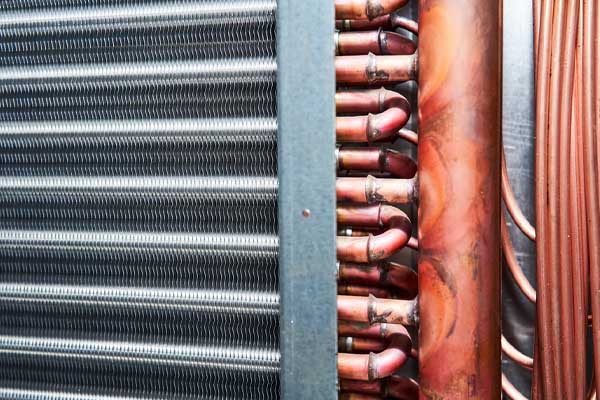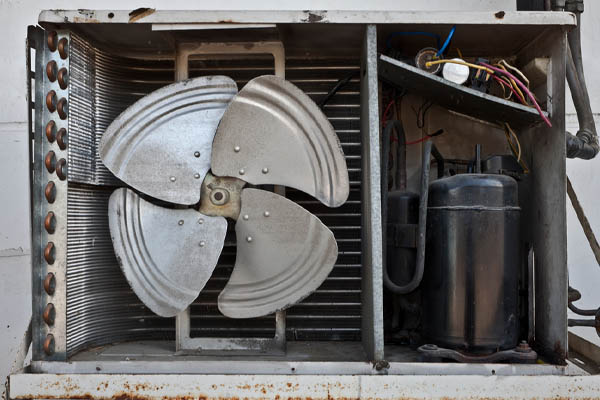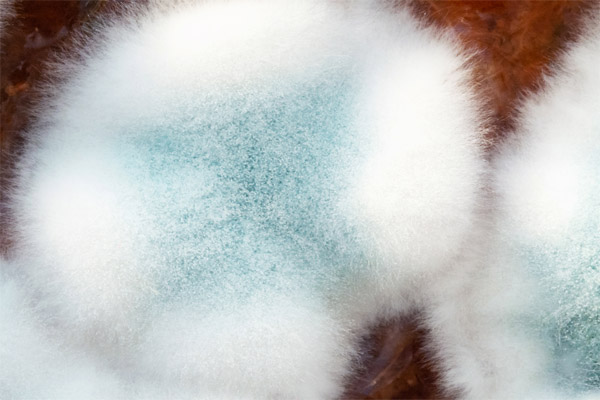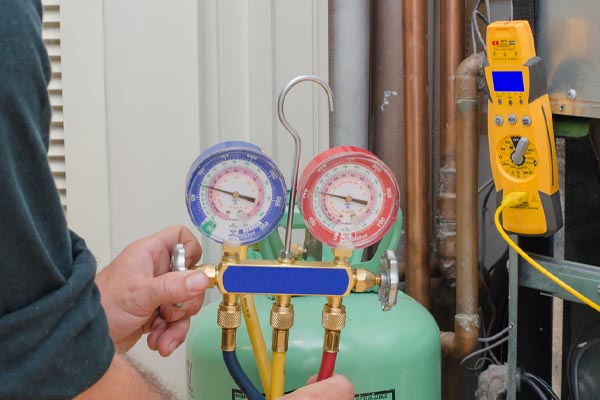What’s The Difference Between A/C Condensers & Evaporator Coils?

Air conditioners are all about moving heat. Contrary to popular belief, they don’t directly try to produce cold air. Instead, they absorb indoor heat and expel it outdoors. After several cycles of heat transfer, homes gradually cool down and become more comfortable. The condenser coils and evaporator coils do much of the work behind the scenes. They may be similar in appearance but they function in opposite ways to produce the desired effects. Read on to find out more about the differences between the condenser vs evaporator coil.
What’s The Difference Between A/C Condensers & Evaporator Coils?
Contents
Let’s dive into how central air conditioners work. The system is split into two parts: the indoor unit and the outdoor unit. These are linked by tubes that contain a substance called the “refrigerant”. It is capable of absorbing high amounts of heat. It can also change state from gas to liquid and vice versa, depending on the pressure. Whenever the A/C is turned on, the refrigerant flows from the indoor unit to the outdoor unit, and back again. Let’s look at how the coils fit into this picture.
The AC Unit’s Evaporator Coil
The evaporator coil is located within the indoor air handler or indoor cooling unit. It is composed of copper tubes through which the extremely cold refrigerant passes. The coil is constantly exposed to warm indoor air drawn by the system blower. Heat from the air is absorbed by the refrigerant inside the evaporator coil tubes. Water vapor around the cold coils also condenses into water, thus reducing humidity. Now that the air is much cooler and drier, the blower pushes it back indoors for the occupants to enjoy.
As for the refrigerant, it continues its journey across the system. It leaves the evaporator coil a bit hotter than when it entered. Then, it flows through an insulated conduit until it reaches the outdoor unit. It is a big cabinet that contains both the compressor and the condenser coils. The refrigerant first enters the compressor, where it is pressurized to push the temperature even higher. The superheated state enables a more efficient heat transfer from the refrigerant to the outdoor air.
The Air Conditioner’s Condenser Coil
If you look at the condenser coil and the evaporator coil side by side, then you will notice that these two have similar designs and materials. However, they have opposite functions. The evaporator coil acquires heat, while the condenser coil releases it. This catch-and-throw is repeated multiple times until the desired thermostat settings are achieved. You might hear the low hum of the compressor and the fans as they run in the distance.
As the hot refrigerant vapor releases heat quickly into the environment, it cools down into its liquid state. The fan in the outdoor AC unit helps this along by blowing outdoor air through the condenser coil. The now liquid refrigerant is now ready for its return trip to the indoor unit’s evaporator coil. It goes through an expansion valve that turns it back to vapor while cooling it down, helping it to absorb more heat for the next pass.
Cooling System Coil Upkeep
Just like other A/C components, coils need periodic upkeep to perform at their best. This is true for both the evaporator coils and the condenser coils. It doesn’t take much to prevent common problems. Just schedule an air conditioner tune-up visit with your local HVAC contractor once a year. Aside from maintaining the coils, they will also check the other parts to make sure that everything is in order. They will go through the standard maintenance checklist for air conditioning systems for optimum energy efficiency and longer lifespan.
Common Air Conditioner Coil Issues
Below, we discuss some of the common issues that air conditioner coils exhibit.
1. Corrosion

Evaporator coils are made from copper and aluminum. Although these will not rust like steel, they may suffer from corrosion and pitting as time goes by. Holes and cracks may develop. These might not be immediately visible to the naked eye, but owners will certainly feel their effects as a refrigerant will slowly leak out of the system. Toxic chemicals may permeate the home. The A/C’s performance will also suffer because there isn’t enough of the substance to absorb indoor heat. HVAC technicians can detect leaks and seal them up before recharging the system with fresh refrigerant.
2. Dirt
Dust can make its way into the air conditioning system. Some particles may settle on the coils and form a significant layer of insulation. This drastically reduces heat transfer, preventing the coils from doing their respective jobs. The fans will have to keep running longer to reach the desired temperature. This increases wear and tear on various components. It also pushes the energy consumption much higher than usual, which increases energy spending. Regular maintenance prevents this problem.
3. Mold

The indoor units are dark and damp inside. They do not get any sunlight to fight off fungi and bacteria. They provide an ideal environment for mold and mildew to grow. These two can thrive inside the system and use the ducts to scatter their spores around the house. Indoor air quality will plummet, along with the health of the family. They might even prevent airflow through the fins of the evaporator coil.
4. Debris
The outdoor unit is vulnerable to the infiltration of debris. For example, dry leaves, twigs, and waste material may get inside the system. If these fall to bottom, then they might block airflow to the condenser coil. This will slow down the release of heat from the refrigerant to the environment. This may be avoided by keeping the perimeter of the unit free from vegetation. Periodic air conditioner coil cleaning is also recommended.
Air Conditioner Refrigerant Problems

There are lots of reasons why an air conditioner is not providing enough cooling for the home. If it was running fine before the problem began, then you might be dealing with a low refrigerant issue. The coils need a certain amount of refrigerant to gather enough heat and push this out of the house. Insufficient levels will keep the home warm during summer. It may even lead to frozen coils and system shutdowns. Call an HVAC technician for help if these happen.
Conclusion
Air conditioners have a clever design that moves heat around to keep your home cool. They use a refrigerant that passes through the coils: the evaporator coil that absorbs indoor heat and the condenser coil that discharges heat outdoors. They work in tandem to produce the results you want. Be on the lookout for common coil issues. Schedule annual professional maintenance to avoid these.
Call McAllister Energy For All Of Your HVAC Requirements
 McAllister Energy offers superior heating and cooling services in Camden County, New Jersey. We hire the best-certified technicians who can provide you with excellent HVAC tune-ups, repairs, installations, and replacements. Each of our techs has the knowledge and experience to service your HVAC system correctly.
McAllister Energy offers superior heating and cooling services in Camden County, New Jersey. We hire the best-certified technicians who can provide you with excellent HVAC tune-ups, repairs, installations, and replacements. Each of our techs has the knowledge and experience to service your HVAC system correctly.
McAllister Energy guarantees the most competitive heating and cooling service costs in the area. Our maintenance services can improve your comfort, increase your energy efficiency while reducing your home heating and cooling costs. If you happen to need an HVAC repair or replacement system, we can recommend the best one for your home while staying within your budget. We back all of our work with a guarantee to ensure your satisfaction. To schedule a service appointment, give McAllister Energy a call today. We offer free, in-home estimates.
You can click here to contact us now or call us at (856) 665-4545 to find out more!